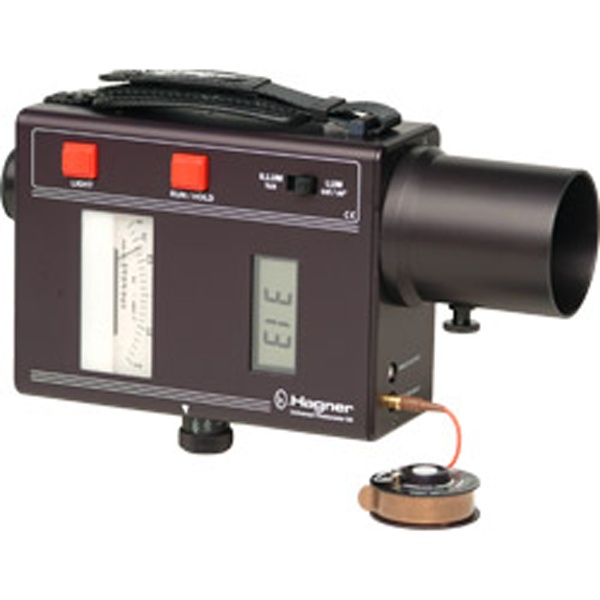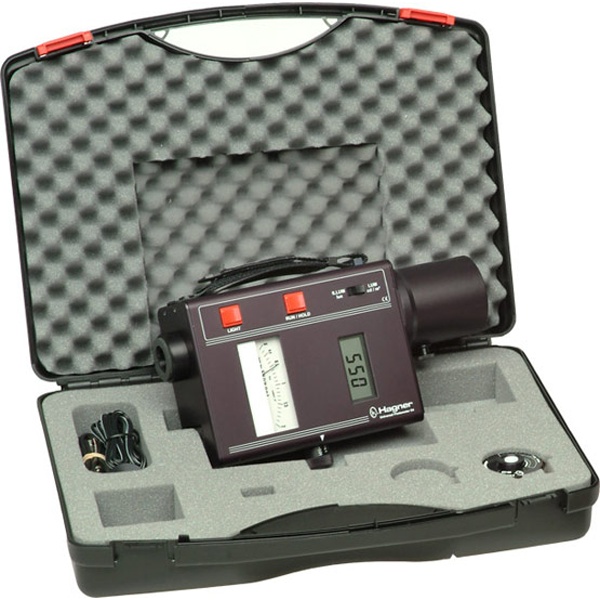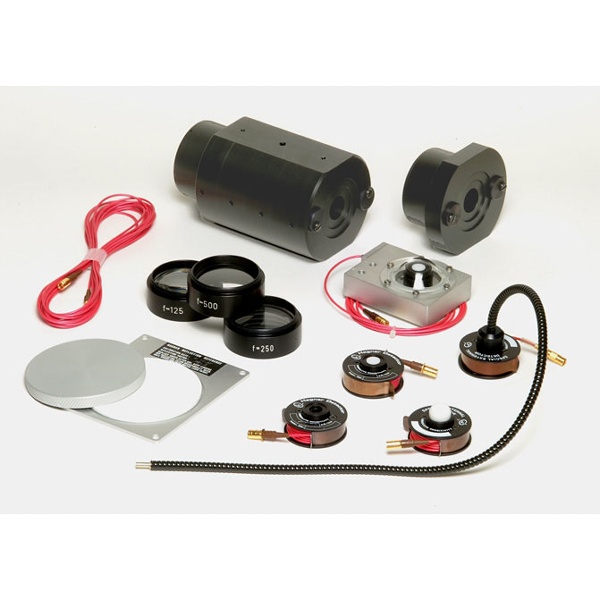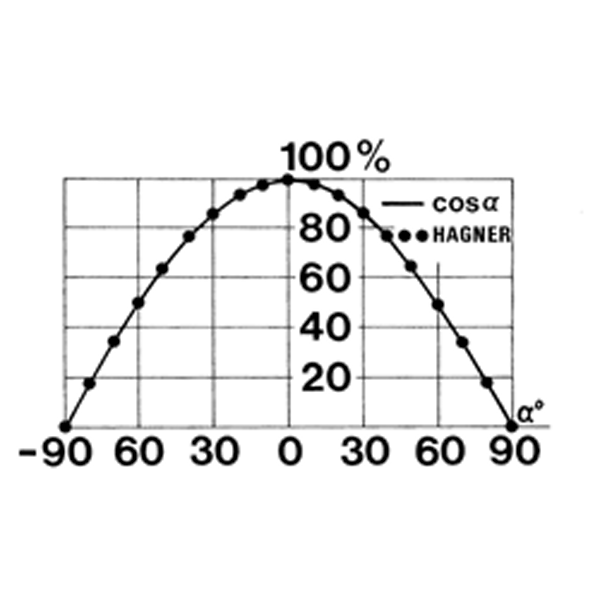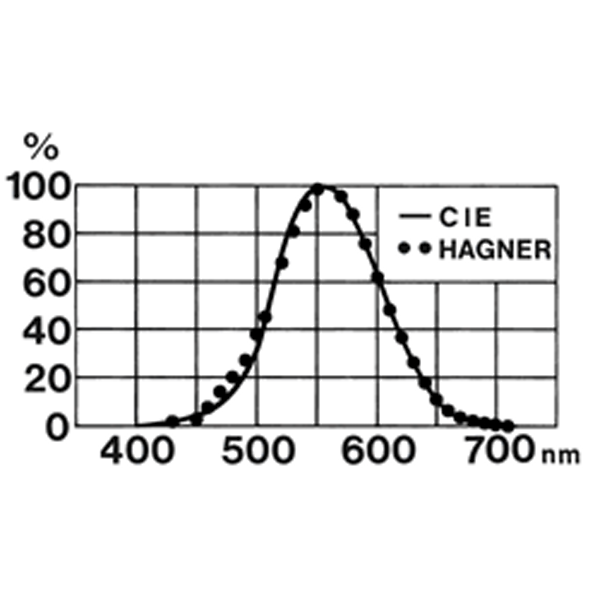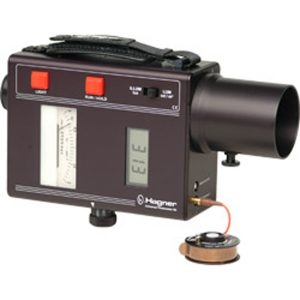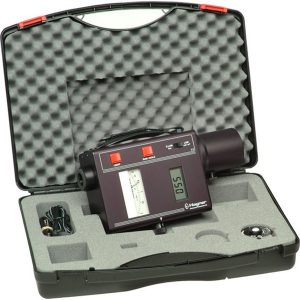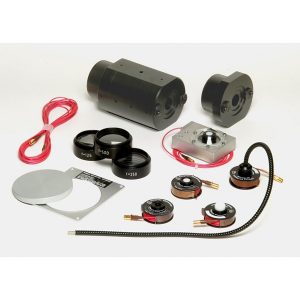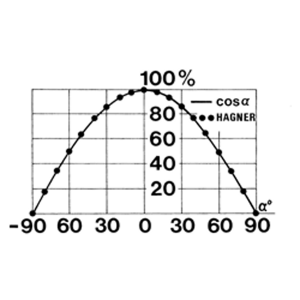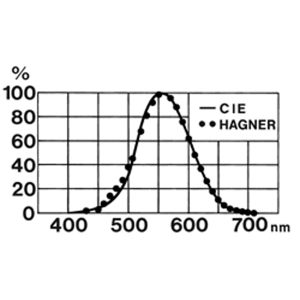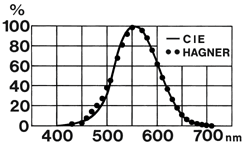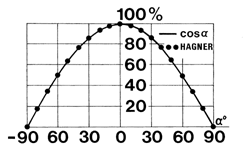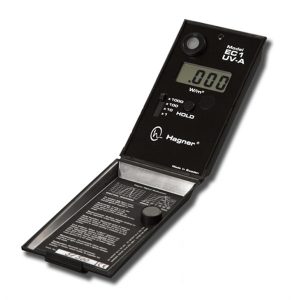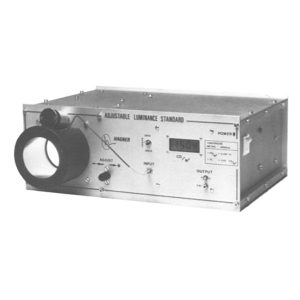HAGNER UNIVERSAL PHOTOMETER/RADIOMETER MODEL S4
The Hagner Universal Photometer/Radiometer is a combined luminance and illuminance
(illumination) meter which is designed for measurements in the field as well as in the laboratory. By
application of the different functions of the meter it is also possible to determine such quantities as
angles and solid angles (using scales in the viewing field), elevation angles (using optional
pendulum), reflection factors (using optional reflection reference), contrasts, transmission and
daylight factors, glare indices etc.
A number of other photometric quantities can be measured with the use of Hagner special detectors
(see next page).
The basic light sensitive components of the photometer are two silicon diodes, filtered to give a
spectral response close to that of the human eye, as defined in CIE standards.
One (internal) detector is built into the optical system for measuring luminance within 1 o circular
field (viewing field approx. 11 o circular).
The other (external) detector, which is well cosine corrected and connected to the instrument by an
approx. 2 metre flexible lead, is used for measuring illuminance.
The external detector is stored in the carrying case, when not in use.
Readings can be made between 0.01-200,000 cd/m² or lux in 5 ranges, with the standard detectors
supplied.
The S4 is provided with an analogue instrument as well as a digital display, (LCD 3½ digit). The
analogue instrument, which is visible from the outside of the meter and also through the view-
finder, is intended for approximative luminance readings. In order to facilitate readings under dark
conditions, it is provided with a scale illumination. The digital display, visible from the outside, is
intended for precise luminance and illuminance readings. The value shown can be locked by means
of a hold button.
The analogue reading through the viewfinder facilitates scanning of an area or surface to find
luminance variations, min or max values etc.
Readings can also be made on a separate instrument, such as a recorder or oscilloscope, which can
be connected to the output terminal of the photometer. Slow or rapid light variations can thus be
studied.
For long-time, stationary measurements the photometer is also provided with a connector for
external voltage 9-12 V. Use of this function automatically disconnects the standard 9 V battery.
The optical viewing/measurement system of the meter can be focused on objects at distances from
0.5 metre to infinity without correction factors involved. Owing to the optical design, any polarized
light will be measured correctly.
Part No
1) Hagner Universal Photometer Model S4

